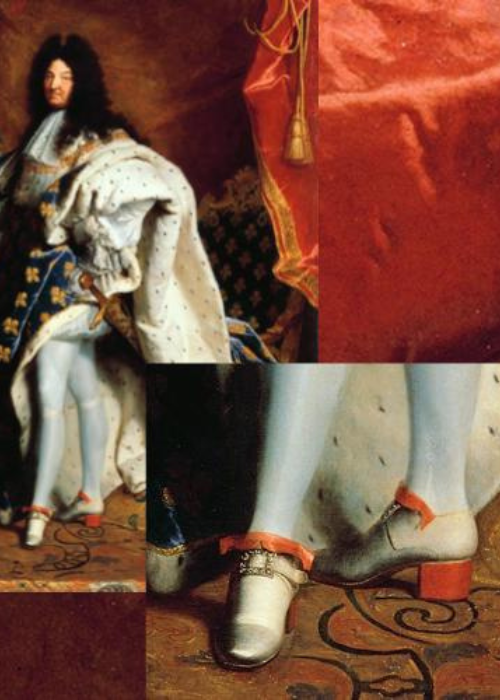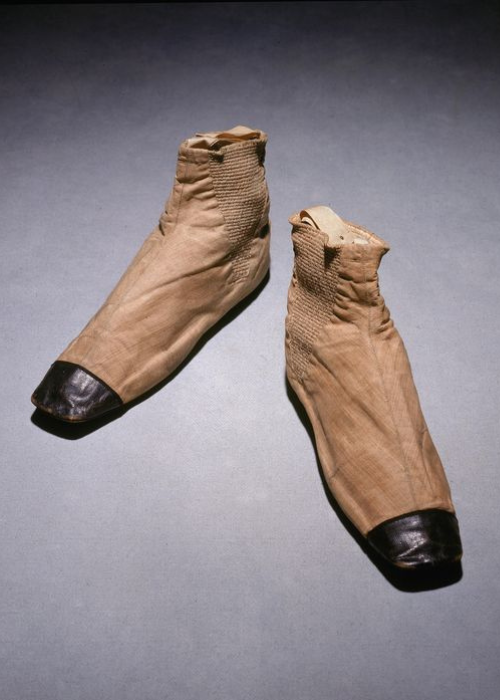No products in the cart.
The major reason shoes enter our life is to shield our feet from the effects of the outside world. But then individuals started using shoes as a means of self-expression, as a way to accessorize their outfits, as a status symbol, etc. As a result, there have been numerous noteworthy changes to shoes over time and during a long dynasty of historical perspectives.
1. Shoe size is measured in barley

There wasn’t a common shoe size like there is now almost until the end of the 19th century. As a result, in the past, people measured the length of a shoe’s sole using a barley grain. This practice is so widespread that at one time the barley grain served as the foundation for a measurement unit, such as the inch. In the UK and Ireland, it continues to be a recognized unit of measurement.
2. The shape of shoes depends on social class
The nobles responded by making their heels even taller as the fashion for wearing high heels spread to the lowest strata of society. Nobles did not require the comfort to labor like the lower classes because even their shoes made it incredibly difficult for them to walk around.
The bigger the square toe, although children primarily wore round toed shoes throughout the Renaissance, the wealthier and more powerful the person.
3. High heels were originally for men
Men were originally intended to wear high heels since it made horseback riding simpler for them. By the seventeenth century, however, men gradually lost interest in wearing high heels; instead, men’s heels started to go lower, while women started to don high heels more frequently.
4. Red sole shoes are a symbol of wealth

The iconic red-soled shoes made famous by Christian Louboutin have grown to become a name in the luxury shoe industry. Men’s scarlet high heels, on the other hand, were a sign of prosperity in the 17th century. King Louis XIV even once issued a decree preventing anyone from entering his court unless they were wearing shoes with red soles.
5. Men want their wives to wear high heels for a special reason
Men demanded that their wives wear chopines, or shoes with extremely high soles, in the fifteenth century. However, they desire this so that their women won’t pursue other men rather than for aesthetic reasons.
High heels were popular at the period, but Venice (Italy) legislation also forbade ladies from donning them because of the excessive number of accidents that resulted in injuries to women. reports of falls.
6. The birth of “sneakers”
Sports shoes—also referred to as “sneakers”—were first developed in the 19th century and have since become a must-have accessory for both fashionistas and comfort enthusiasts. Guards initially wear these shoes because the rubber soles beneath them keep them from making any noise. As a result, prisoners referred to it as a “sneaker”.
7. Before the 19th century, we didn’t have left and right shoes
We frequently believe that only kids confuse the left and right shoes, but did you know that the left and right shoes weren’t actually separated until the 19th century?
As a result, shoes were traditionally constructed to fit both feet evenly before the 19th century. Wearing shoes eliminates the need for people to discriminate between left and right when walking, but it also makes moving around slightly more difficult than it is presently.
8. The first women’s boots worn by Queen Victoria

For Queen Victoria, Joseph Sparkles created the first pair of women’s boots. He pioneered the development of shoes without laces, buttons, or even heels. This straightforward invention was developed with the intention of providing comfort to the wearer and being so well-liked that boots are still a preferred item today.
